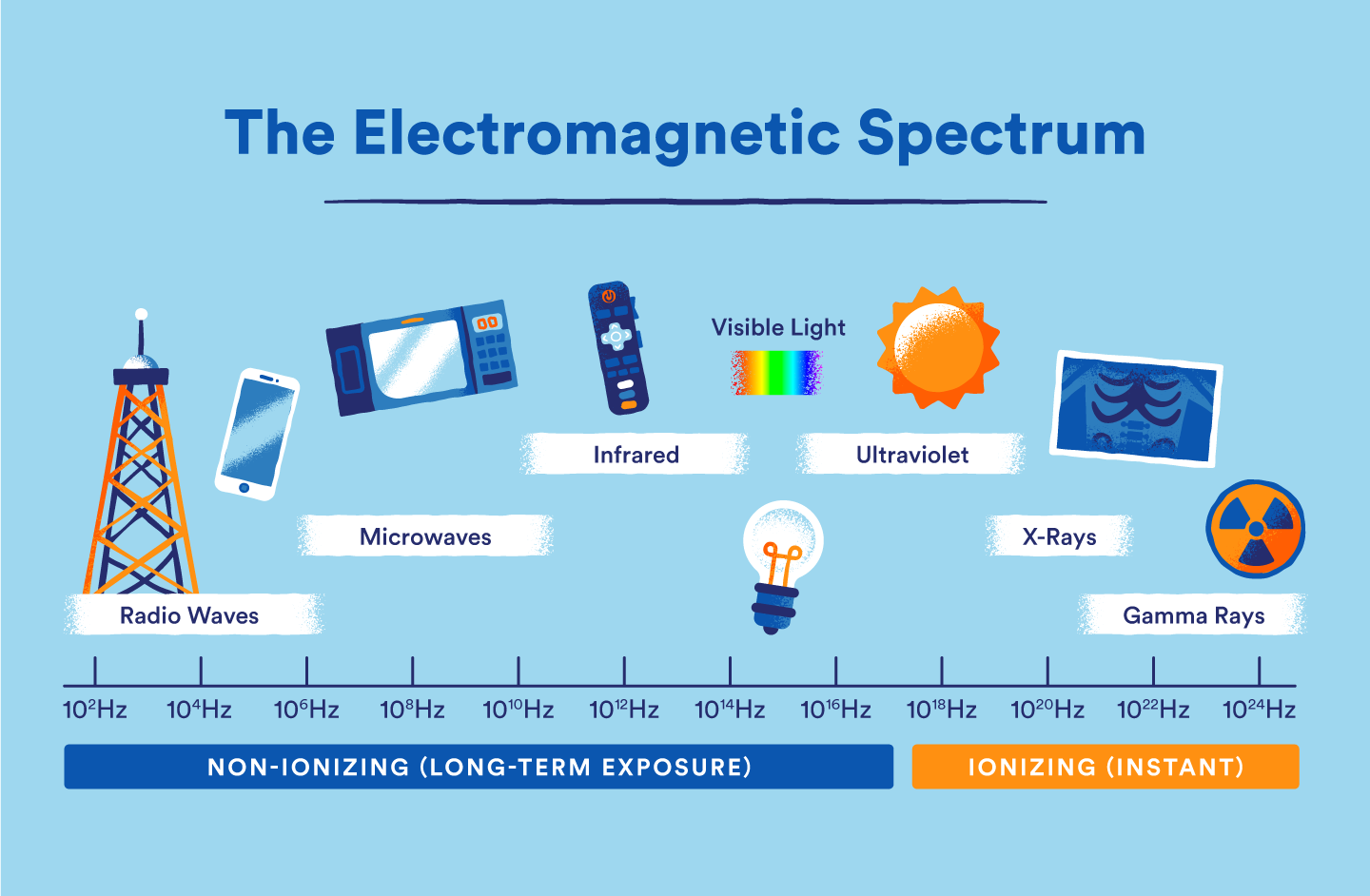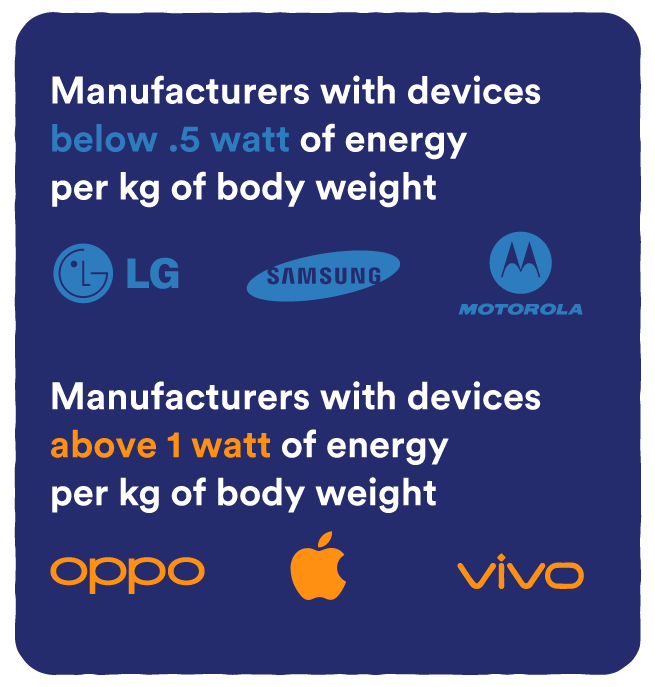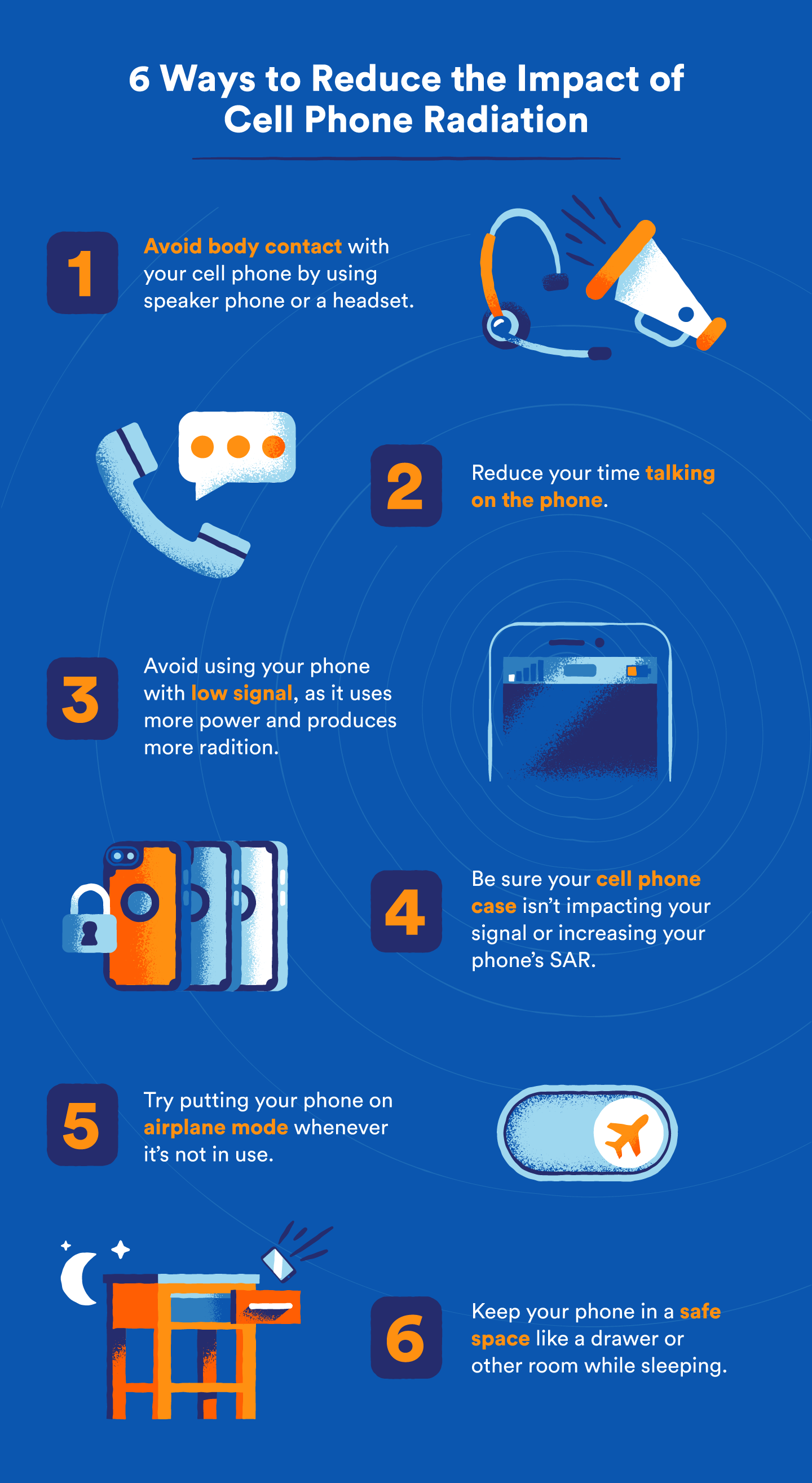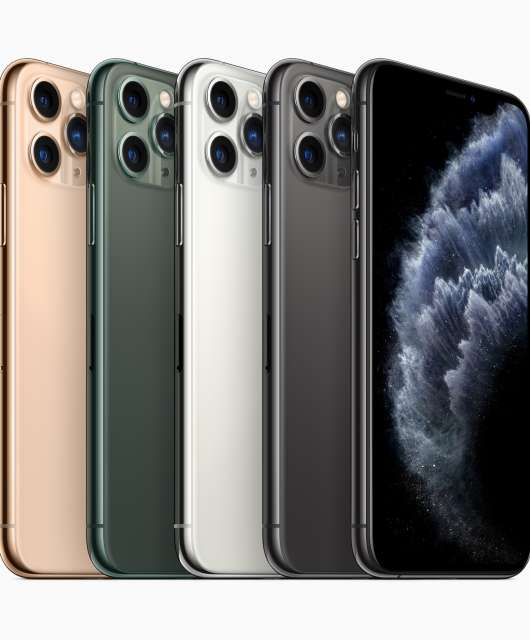An issue that is brought up time and time again is how cell phones affect the human body. From concerns about when kids should get smartphones to concerns about the impact of too much screen time to claims that cell phones are linked to cancer found in the body, there are many concerns about these devices.
The truth is that while their impact is being studied, these devices haven’t been around for long enough to know what long-term effects they have. That being said, we are able to compare cell phones with other types of radiation in order to gain a better understanding of how they work and what we can do to prevent potential negative effects.
Jump to the infographic.
What is Radiation?
Radiation is a form of electromagnetic energy. All electromagnetic energy falls on the electromagnetic spectrum. There are two types of electromagnetic radiation: ionizing and non-ionizing. On the low end of the spectrum is extremely low frequency (ELF) radiation which is non-ionizing. The opposite side of the spectrum has x-rays and gamma rays which are ionizing.
Where something lies on the electromagnetic spectrum depends on the wavelength’s frequency. The more frequent a wave passes by a certain point, the more radiation it produces.
While radiation has a negative connotation, it’s not necessarily bad. Visible light is an example of electromagnetic radiation that falls in the middle of the spectrum. A problem occurs when humans absorb too much of this energy. For example, laying in direct visible light for too long can cause a burn or even lead to skin cancer.

Comparing Radiation
Frequency is often measured in hertz (Hz) or millihertz (MHz). Using this scale, here is the frequency of radiation in common electronics:
- Airplane radio: 122.75 MHz
- Cell Phones: 450-2000 MHz (most common is about 850 MHz)
- Microwave ovens: 2450 MHz
- Wifi: 2450 MHz
Another way that radiation is measured is through Roentgen equivalent man or rem. Rem or millirem measures the effects radiation has on humans. According to the U.S. Nuclear Regulatory Commission, the average annual dose of radiation per person from natural and man-made sources is 350 mrems.
Mrem for common items:
- Living within 50 miles of a nuclear power plant: 0.0009 mrem
- Using a gas lantern when camping: 0.003 mrem
- Wearing an LCD wristwatch: 0.006 mrem
- Living within 50 miles of a coal-fired electrical utility plant: 0.03 mrem
- Using a video display: 1 mrem
- Watching TV: 1 mrem
- Round trip flight from Los Angeles to New York: 6 mrem
- Chest x-ray: 10 mrem
- Having a nuclear medical procedure like a thyroid scan: 14 mrem
- Smoking 20 cigarettes per day: 36 mrem per year
- Wearing a plutonium-powered cardiac pacemaker: 100 mrem
How Does Cell Phone Radiation Work?
Cell phones emit signals that are in the form of non-ionizing electromagnetic radiation. Because phones are used in close proximity to your head, it’s a concern that your brain may absorb some of this energy. This type of radiation is fine in small doses, but if someone is on their phone a lot, it could impact their body.
To regulate the amount of radiofrequency energy emitted by phones, the FCC uses a specific absorption rate (SAR). For a phone to pass this certification and be sold in the United States, it must be less than 1.6 watts of energy per kilogram of body weight.
Manufacturers like LG, Samsung and Motorola have managed to keep the SAR value on some of their phones very low (below 0.5). On the other hand iPhone, Vivo and Oppo are on the higher side (above 1).

Concerns About Cell Phone Radiation
The main concern with cell phone radiation is that is will cause cancer. In 2011, the International Agency for Research on Cancer found that it’s “possibly carcinogenic to humans.” This lead to the American Cancer Society stating that while there could be some cancer risk associated with radiofrequency radiation, the evidence is not strong enough and needs to be further investigated.
Since then cell phone studies have been inconclusive and inconsistent. This is due to recall bias, inaccurate reporting, participation bias, and the changing technology and methods of use.
How to Reduce Cell Phone Radiation
While studies are inconclusive about the long-term effects of cell phone radiation, there are ways to reduce your exposure to be safe.

Avoid Body Contact
Keeping the phone farther from your head will reduce the radiation you are absorbing. When possible, put your phone on speakerphone or try using a hands-free device.
Reduce Time Talking on the Phone
Another way to limit your exposure to radiation is by reducing your time talking on the phone. Try sending a text or meeting up in person. If this isn’t possible, use a hands-free headset.
Avoid Use When Signal is Low
When your phone signal is low, your phone is using more power in an attempt to connect with a cell tower. If your phone service is low or you are in a moving vehicle, consider waiting to make a call until you have more or a signal.
Beware of Phone Cases
Phone cases can be protective, but cases with metal or magnets could be making your phone signal worse. This can then cause your phone to use more power which causes more radiation. Be sure your phone case isn’t increasing the SAR of your phone or weakening your signal.
Try Airplane Mode
When your phone isn’t in use, turn it onto airplane mode. This will keep the phone from searching for a signal and using power. It will also save battery so you can use the phone for longer without charging.
Keep Phone in a Safe Place When Sleeping
When you are sleeping, keep your phone on airplane mode, in a different room or in a drawer so that you aren’t exposed to radiation for a long period of time. If you have kids, be sure they are keeping their phones in a safe place as well.
Cell phones are a part of life, but we aren’t positive about their long term effects. Be sure you are taking steps to protect yourself from cell phone radiation. In addition, keep your mobile device safe with Panda Security’s antivirus.
References:
AOPA I NRC I CNET I Encyclopedia Britannica I How Stuff Works I Forbes I EMF Advice I Pong Pulse I FCC






